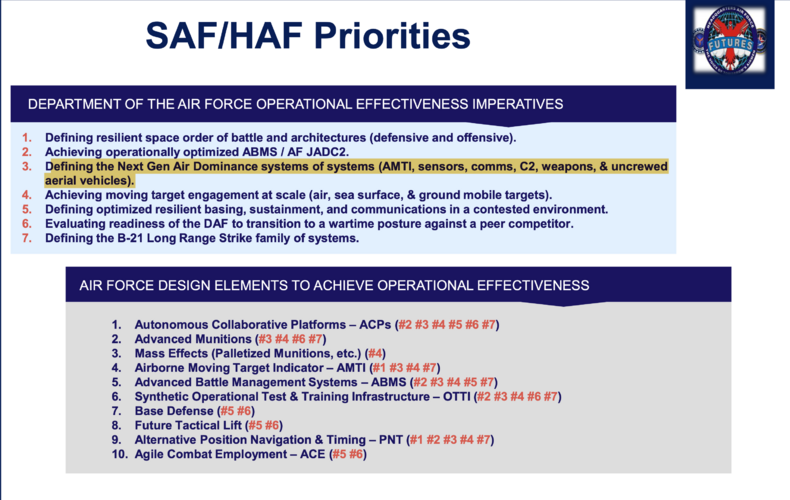According to Kendall, problem with NGAD strictly as F-22 successor is this.
1. It takes 20 billion to finish R&D
2. After R&D only 200 will be built which means huge unit costs and not much to amortize R&D
3. May not be the right operational concept based on more recent information (this part is a bit confusing to me)
I agree on point 1 and 2 but I believe the conclusion of point 3 was, after review by expert panel, that the concept was valid enough to progress forward. I haven't read where he was enthusiastic about manned NGAD, he sems to come across more a as have to do more than a want to do.
So one alternative he mentioned is NGAD becomes a less expensive multirole fighter as an F-35 follow on, and also with closer coordination with CCAs. And based on what he said about wanting NGAD unit cost to be similar to F-35 and F-15EX, it seems like he was leaning in this direction.
The F-35 was an option but not the preferred option.
In ideal world there will be both F-22 successor and F-35 successor as separate airframes, but the question of money, it seems like USAF only thinks that it can do one of these, so they might think it's better to rescope NGAD into F-35 successor to replace both aircraft. But it all depends on what next administration will do.
Recap manned NGAD into the F-35 successor is also a time issue. To go back now means likely a three to five year exercise in requirements and vendor submissions before a contract could be awarded, especially if a NGAD prototype has flown and that work mostly cannot carry forward.
The F-16 has been manufactured in continually upgraded form for over 50 years now. If the USAF goes forward with NGAD, pushing the bleeding edge (and the cost), it's entirely possible that the F-35 stays in production as the cheaper mass-produced option for both the USAF and allies.
Allies sure. The F-16 isn't a great example though as the USAF received their last F-16 in 2004 and had only taken token numbers from the approx the late 90s. F-16 production numbers from a 2013 news article are
here,
As I've said in the F-35 thread I'd rather see the USAF bump the rate to 80+ A models a year and then transition in the late 30s to a new airframe.
Even CCAs could end up being more of an exquisite solution and not a cheap replacement for an F-35.
CCA could but the USAF is not leaning that way at the moment. Increment One was very much cost focused and it appears based on comments from LM that they are focusing on lower capability for Increment Two. Perhaps once the concept has been bedded down then more capable/exquisite CCAs come along but I doubt the exquisite versions will ever be purchased in the numbers needed.
On the other hand, if NGAD + CCA becomes the affordable mass option, or if the USAF pursues a fighter even cheaper than the F-35 (presumably with CCAs as enablers), then perhaps F-35 production does get shut down early.
Current planned manned NGAD will never be the affordable option even with CCAs, I think no one disputes that. CCA was always going to be paired with F-35 in greater numbers, 300 F-35s with a pair of CCA with only 200 NGAD with a pair of CCA. I also don't think a new US fighter will ever be cheaper than the F-35. I cannot see whatever is planned reaching the same production numbers, barring a global protracted conflict of course.
Unfortunately, I would bet good money that the DOD ends production of the F-35 early without replacement programs in full rate production. In 2050 we will bemoan the decision to curtail F-35 production, just as we've done with the F-22 and B-2 (I would add F/A-18 to that list as well).
The USAF had to wait from 2004 with the last F-16 till the F-35 IOC'ed in 2016. I agree it likely seems like there will be a gap, trading new F-35s or perhaps retiring F-15EX etc to pay for a new capability.
Alternatively we could get a proper Cold War 2 and the US Govt will significantly fund the US military to become again a fighting force than can operate globally but I have my doubts.


